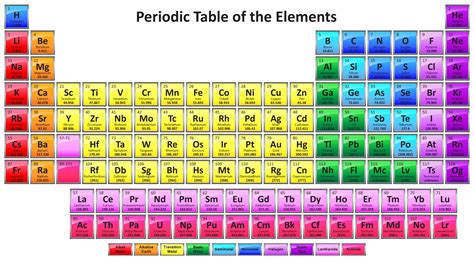Molecular compounds are a crucial aspect of chemistry, encompassing a wide range of substances that are formed when two or more different elements share electrons to create a chemical bond. Unlike ionic compounds, which are formed through the transfer of electrons, molecular compounds involve the sharing of electron pairs between atoms. This fundamental difference in bond formation leads to distinct properties and behaviors among molecular compounds. Understanding how molecular compounds work is essential for advancing various fields, including materials science, pharmaceuticals, and environmental chemistry.
The diversity of molecular compounds is vast, with examples ranging from simple molecules like water (H2O) and carbon dioxide (CO2) to complex organic molecules such as sugars, fats, and DNA. The functionality of these compounds is deeply rooted in their molecular structure, which determines their physical and chemical properties. For instance, the polarity of a molecule, which arises from the unequal sharing of electrons between atoms, influences its solubility, boiling point, and reactivity. Furthermore, the three-dimensional shape of a molecule, or its stereochemistry, can significantly affect its biological activity and interaction with other molecules.
Key Points
- Molecular compounds are formed through the sharing of electrons between atoms, leading to covalent bonds.
- The structure and polarity of a molecule determine its physical and chemical properties, such as solubility and reactivity.
- The three-dimensional shape of a molecule is crucial for its biological activity and interactions with other molecules.
- Molecular compounds can exhibit a wide range of properties, from the simplicity of water to the complexity of DNA.
- Understanding molecular compounds is essential for advancements in materials science, pharmaceuticals, and environmental chemistry.
The Formation of Molecular Compounds

The process of forming molecular compounds involves the sharing of one or more pairs of electrons between atoms, resulting in a covalent bond. This sharing can occur in various ways, leading to different types of covalent bonds, such as single, double, and triple bonds. The number and type of bonds formed between atoms influence the molecular geometry, which in turn affects the compound’s physical and chemical properties. For example, methane (CH4) and ammonia (NH3) are both simple molecules with tetrahedral geometries, but they exhibit different chemical behaviors due to the differences in their bond polarities and the atoms involved.
Types of Molecular Compounds
Molecular compounds can be categorized into several types based on their composition and structure. Polar molecules, such as water and ammonia, have a net dipole moment due to the unequal sharing of electrons, making them more soluble in water and reactive towards ionic compounds. Nonpolar molecules, such as methane and ethane, lack a net dipole moment, resulting in lower solubility in water and higher solubility in nonpolar solvents. Additionally, there are complex molecules like proteins and nucleic acids, which are composed of thousands of atoms and play critical roles in biological systems.
| Type of Molecular Compound | Examples | Properties |
|---|---|---|
| Polar Molecules | Water (H2O), Ammonia (NH3) | Soluble in water, reactive |
| Nonpolar Molecules | Methane (CH4), Ethane (C2H6) | Less soluble in water, more soluble in nonpolar solvents |
| Complex Biomolecules | Proteins, Nucleic Acids (DNA, RNA) | Critical for biological functions, highly specific interactions |

Applications of Molecular Compounds

The applications of molecular compounds are vast and varied, reflecting their diverse properties and functionalities. In materials science, molecular compounds are used to develop new materials with specific properties, such as conductivity, strength, and optical activity. In pharmaceuticals, understanding the molecular structure and interactions of drugs and biological molecules is crucial for designing effective treatments with minimal side effects. Environmental chemistry also relies heavily on the study of molecular compounds, as it seeks to understand and mitigate the impact of pollutants on ecosystems and human health.
Future Perspectives
As research continues to unveil the intricacies of molecular compounds, new avenues for application and innovation emerge. The development of nanotechnology, for instance, relies on the manipulation of molecular structures to create materials with unique properties at the nanoscale. Similarly, advances in computational chemistry and molecular modeling enable the prediction of molecular properties and behaviors, facilitating the design of new compounds with specific functionalities. The future of molecular compounds holds much promise, from improving existing technologies to resolving some of the world’s most pressing challenges.
What are the primary factors influencing the properties of molecular compounds?
+The primary factors include the molecular structure, polarity, and the type and number of covalent bonds formed between atoms.
How do molecular compounds differ from ionic compounds in terms of bond formation?
+Molecular compounds are formed through the sharing of electrons (covalent bonding), whereas ionic compounds are formed through the transfer of electrons (ionic bonding).
What are some common applications of molecular compounds in real-world scenarios?
+Applications include the development of new materials, pharmaceuticals, and addressing environmental challenges through a deep understanding of molecular structures and properties.
In conclusion, molecular compounds are a cornerstone of chemistry, with their formation, structure, and properties underpinning a wide range of phenomena and applications. As our understanding of these compounds deepens, so does our ability to manipulate and design molecules with specific functionalities, driving innovation and addressing complex challenges across various disciplines.



